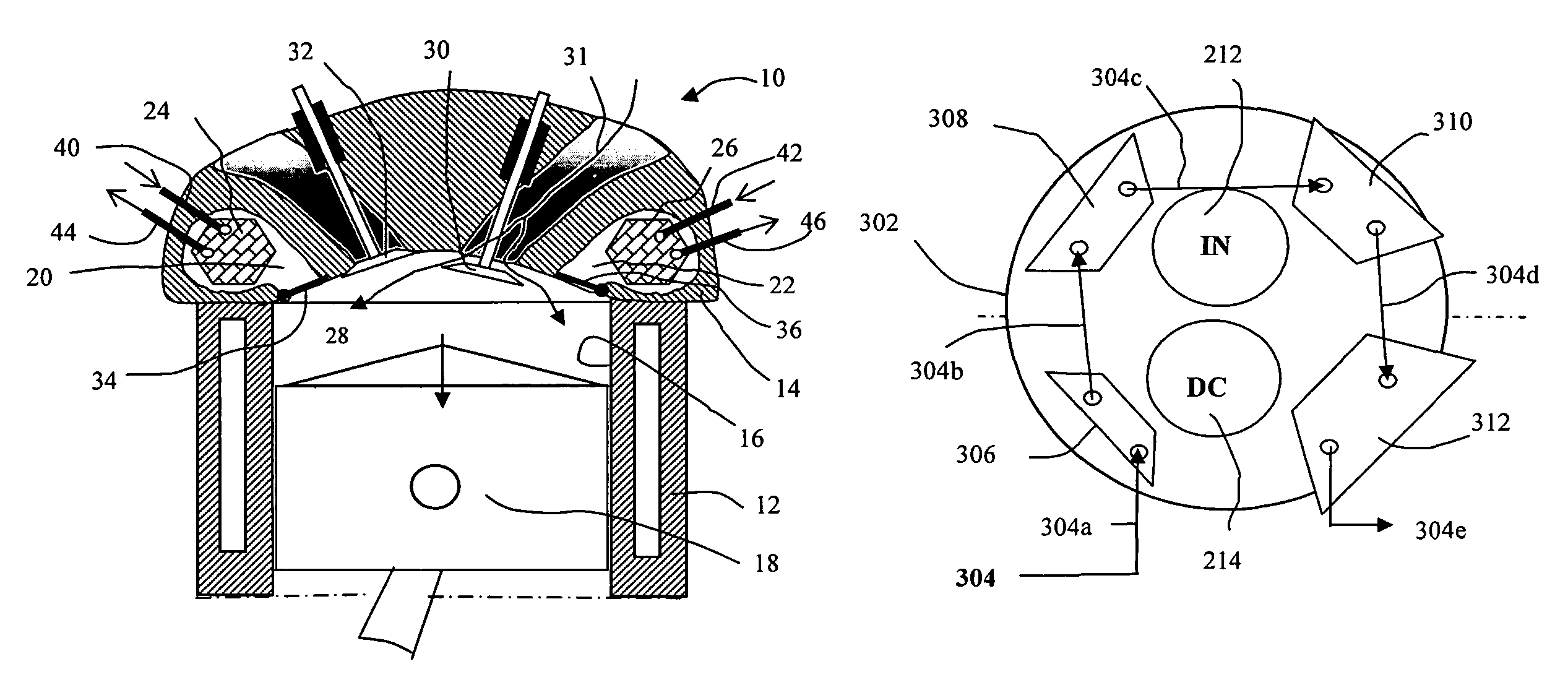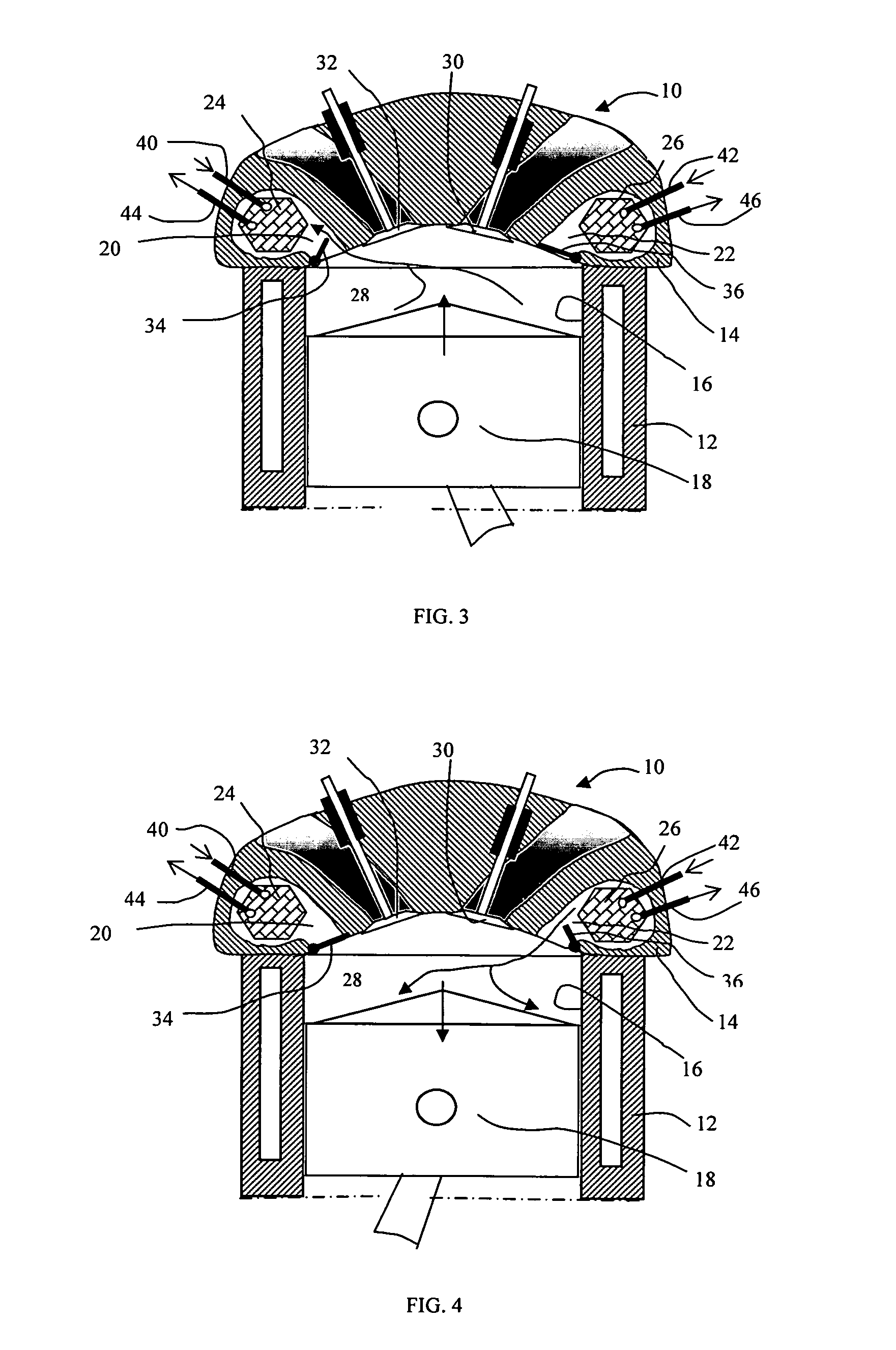Heat engines
a heat engine and heat sink technology, applied in the field of heat engines, can solve the problems of large temperature gradient along the circumference of the housing, internal combustion engine, and not working in cycles, and achieve the effects of increasing power output, facilitating heat transfer, and increasing heat transfer duration
- Summary
- Abstract
- Description
- Claims
- Application Information
AI Technical Summary
Problems solved by technology
Method used
Image
Examples
Embodiment Construction
[0051]FIG. 1 illustrates a heat engine 10 in accordance with the present invention, which includes a cylinder block 12 and a cylinder head 14. The cylinder block 12 contains at least a cylinder 16 and a piston 18 that is slidably disposed within the cylinder 16. Associated with each engine cylinder 16, the cylinder head 14 defines a first heating chamber 20 and a second heating chamber 22. Furthermore, associated with the heating chambers, a first heat exchanger unit 24 and a second heat exchanger unit 26 are disposed, respectively, within the heating chambers 20 and 22. When the piston 18 reaches the top dead center (TC), cylinder space 28, as defined by the bottom face of the cylinder head 14, the top face of the piston 18, and the sidewall of the cylinder 16, may be minimized. The cylinder head is provided with an intake port and a discharge port, and the intake port has an intake valve 30, and the discharge port has a discharge valve 32. Additionally, the first heating chamber 2...
PUM
 Login to View More
Login to View More Abstract
Description
Claims
Application Information
 Login to View More
Login to View More - R&D
- Intellectual Property
- Life Sciences
- Materials
- Tech Scout
- Unparalleled Data Quality
- Higher Quality Content
- 60% Fewer Hallucinations
Browse by: Latest US Patents, China's latest patents, Technical Efficacy Thesaurus, Application Domain, Technology Topic, Popular Technical Reports.
© 2025 PatSnap. All rights reserved.Legal|Privacy policy|Modern Slavery Act Transparency Statement|Sitemap|About US| Contact US: help@patsnap.com



